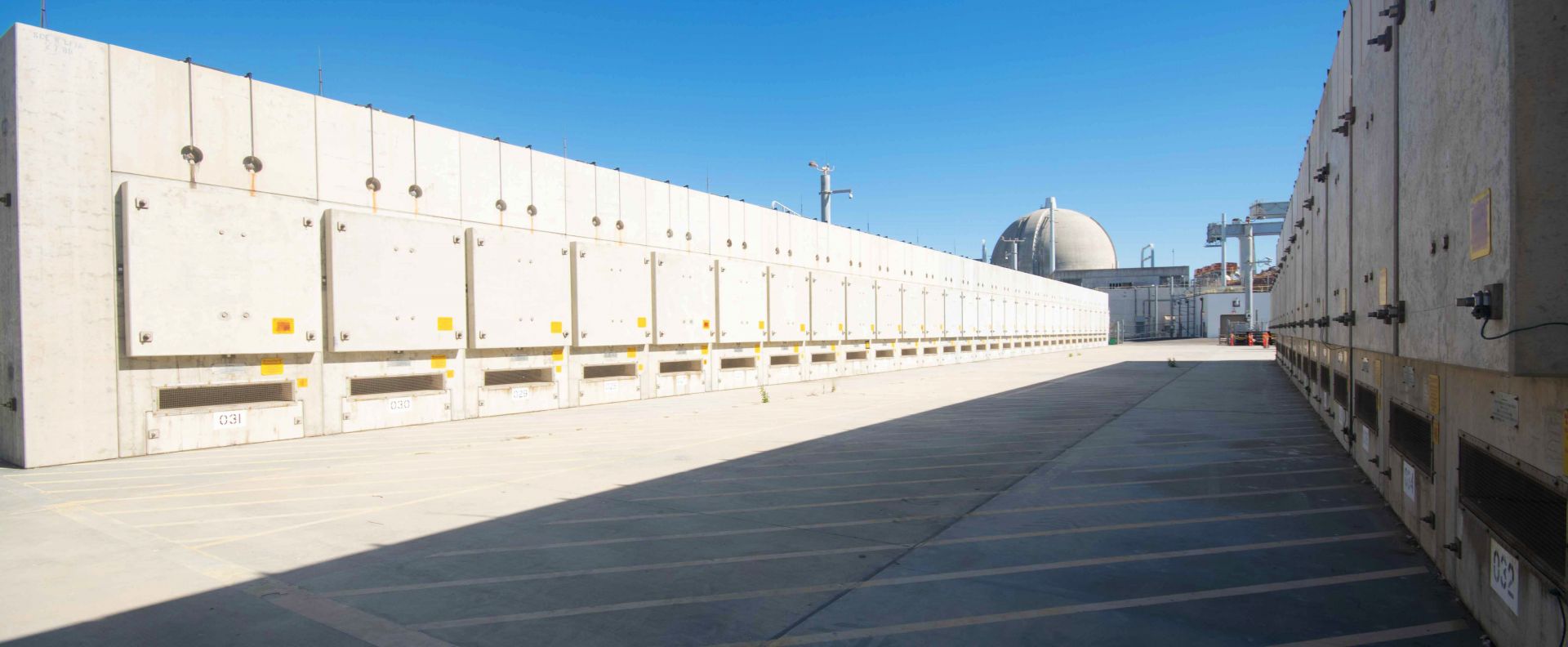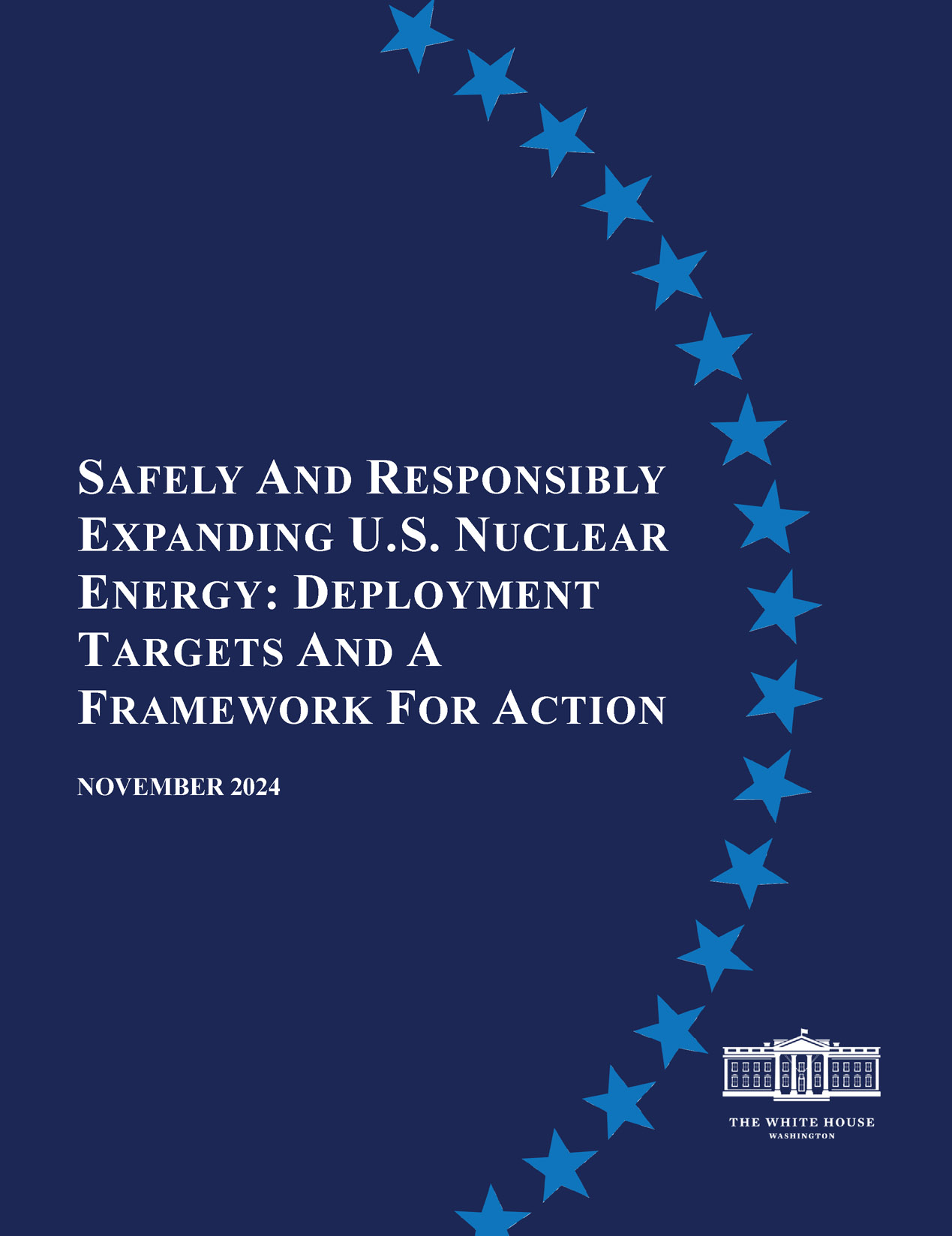The Orano TN-NUHOMS dry fuel storage system at San Onofre Nuclear Generating Station. The system holds 50 canisters of spent nuclear fuel. (Photo: SONGS)
The Department of Energy has started over on the quest for a place to store used fuel. Its new goal, it says, is to foster a national conversation (although this might better be described as many local conversations) about a national problem that can only be solved at the local level with a “consent-based” approach. And while the department is touting the various milestones it has already reached on the way to an interim repository, the program is structured in a way that means its success will not be measurable for years.
INL team removing and staging irradiated ANEEL fuel rodlets in the ATR canal. (Photo: Clean Core)
November 15, 2024, 7:03AMNuclear NewsErhard W. Koehler and Anne Jennings N.S. Savannah, the first commercial nuclear-powered cargo vessel, en route to the World’s Fair in Seattle in 1962. (Photo: U.S. National Archives)
It’s safe to say that readers of Nuclear News are familiar with decommissioning. It’s even safe to assume that experienced decommissioning practitioners are familiar with the National Historic Preservation Act (NHPA) and how it applies to typical projects. What’s different about the N.S. Savannah is that the entire project site is a historic property—and in fact, is a federally owned National Historic Landmark (NHL), a status that confers the highest level of protection under law. Federal owners of NHLs are obligated to minimize harm in both planning and actions. Distilled to its salient point, no federal owner of an NHL should destroy it if there’s a reasonable alternative. That level of preservation is not what we normally associate with nuclear decommissioning. This perfectly summarizes the challenges, and opportunities, that decommissioning Savannah offered. The story of how the Maritime Administration (MARAD) managed these two otherwise contradictory processes showcases how historic preservation and decommissioning can positively intersect, provides a pathway for other historic facilities, and further adds to the already illustrious history of one of our nation’s significant 20th century landmarks.
A view of Oklo’s preferred site at INL. (Photo: Oklo)
Oklo Inc. announced yesterday that it has partnered with “two major data center providers” under letters of intent (LOIs) to deliver up to 750 MW of power from multiple 15 MW or 50 MW Oklo microreactors at data centers in “select” undisclosed U.S. markets.
The ASA Nuclear Technology for Marine Propulsion class of 2024 poses at MIT. (All photos: MIT Department of Nuclear Science and Engineering)
Some 30 nuclear engineering departments at universities across the United States graduate more than 900 students every year. These young men and women are the present and future of the domestic nuclear industry as it seeks to develop and deploy advanced nuclear energy technologies, grow its footprint on the power grid, and penetrate new markets while continuing to run the existing fleet of reactors reliably and economically.
COP29 takes place November 11–22, in Baku, Azerbaijan. (Photo: Adobe Stock)
As COP29 kicked off November 11, industry advocates worldwide are hoping to draw attention and increase buy-in to the need for more nuclear capacity.
A 3D, semitransparent model of the TMI-2 reactor building is helping planners and workers visualize the work to be done in the radiologically controlled building. (All photos: Tim Gregoire)
Constellation Energy has announced that it will seek to restart Unit 1 of the Three Mile Island nuclear power plant in Pennsylvania as part of an agreement with Microsoft to power that company’s data centers. Given the growing interest by tech companies in using clean, reliable nuclear power to meet their growing energy demands, the September 20 announcement to reopen TMI-1, which was shut down and defueled in 2019, was not a huge surprise.
The H9 Hall thruster, developed at UMich’s Plasmadynamics and Electric Propulsion Laboratory. (Image: William Hurley/University of Michigan)
Seeking spacecraft that can “maneuver without regret,” the U.S. Space Force is investing $35 million in a national research team led by the University of Michigan to develop a spacecraft with an onboard microreactor to produce electricity, with some of that electricity used for propulsion. But this spacecraft would not be solely dependent on nuclear electric propulsion—it would also feature a conventional chemical rocket to increase thrust when needed.
A technician prepares salts for use in MSRE in 1964. (Photo: ORNL)
FLiBe—a mixture of lithium fluoride and beryllium fluoride—is not an off-the-shelf commodity. The Department of Energy suspects that researchers and reactor developers may have a use for the 2,000 kilograms of fluoride-based salt that once ran through the secondary coolant loop of the Molten Salt Reactor Experiment (MSRE) at Oak Ridge National Laboratory.
OREM manager Jay Mullis (center) discusses the demographics of the current Oak Ridge workforce and the skills needed in the years ahead to advance cleanup at ORNL and the Y-12 National Security Complex. (Photo: DOE)
Federal and contractor officials, community leaders, and educators gathered in Knoxville, Tenn., on October 29 for a roundtable event focused on ensuring the Oak Ridge Office of Environmental Management (OREM) and its partners have the resources and infrastructure needed to support a robust, talented workforce in the years ahead.
President Yuk-Seol Yoon (center) attends a ground-breaking ceremony for Shin-Hanul Units 3 and 4. (Photo: South Korea presidential office)
The U.S. and South Korea have reached a provisional agreement and are working on a memorandum of understanding to advance the countries’ partnership on civil nuclear energy.
SRNS’s Erika Baeza-Wisdom gives an overview of SRNS pit production to UTEP students. (Photo: SRNS)
Savannah River Nuclear Solutions (SRNS), the managing and operating contractor at the Department of Energy’s Savannah River Site in South Carolina, and the DOE’s Los Alamos National Laboratory in New Mexico are partnering with multiple universities to develop next-generation technology and personnel pipelines to advance the DOE National Nuclear Security Administration’s two-site pit production mission.
Chapman (left) and Methven at the West Burton power station. (Photo: UKIFS)
Leadership of the United Kingdom’s STEP (Spherical Tokamak for Energy Production) fusion program has transitioned to U.K. Industrial Fusion Solutions Ltd. (UKIFS), a wholly owned subsidiary of the U.K. Atomic Energy Authority (UKAEA). UKIFS was established in February 2023 to lead a public-private partnership that will design, build, and operate the STEP prototype fusion energy plant in Nottinghamshire in England’s East Midlands region.
The Diablo Canyon plant. (Photo: Doc Searles)
The Nuclear Regulatory Commission is asking for public comment on its draft supplemental environmental impact statement for Diablo Canyon’s license renewal request.










 As the United Nations’ COP29 climate summit kicked off this week, President Biden’s administration laid out plans to add 200 GW of nuclear power in the next 25 years through a combination of new reactor deployment, plant restarts, and upgrades at existing sites.
As the United Nations’ COP29 climate summit kicked off this week, President Biden’s administration laid out plans to add 200 GW of nuclear power in the next 25 years through a combination of new reactor deployment, plant restarts, and upgrades at existing sites.









